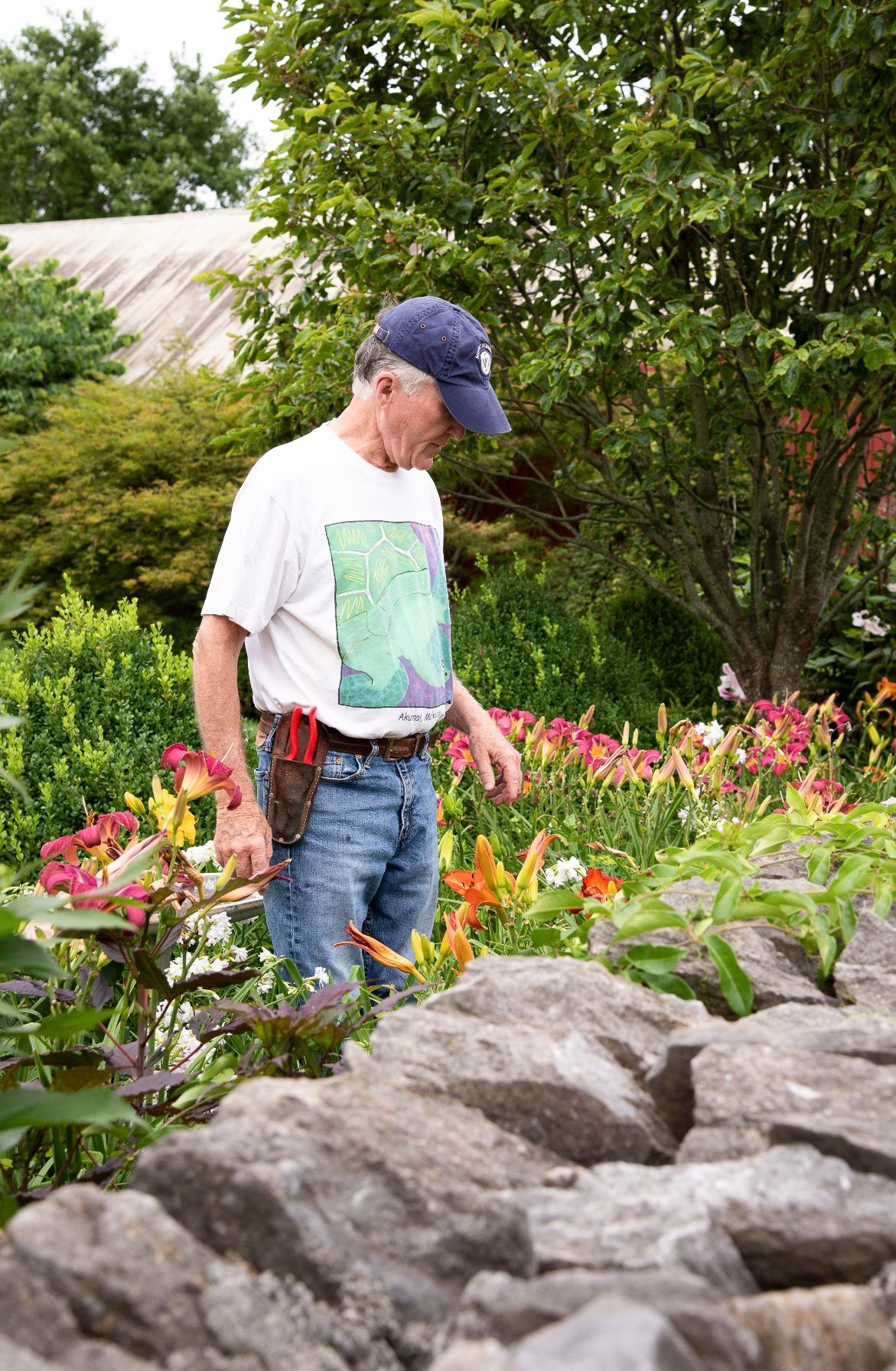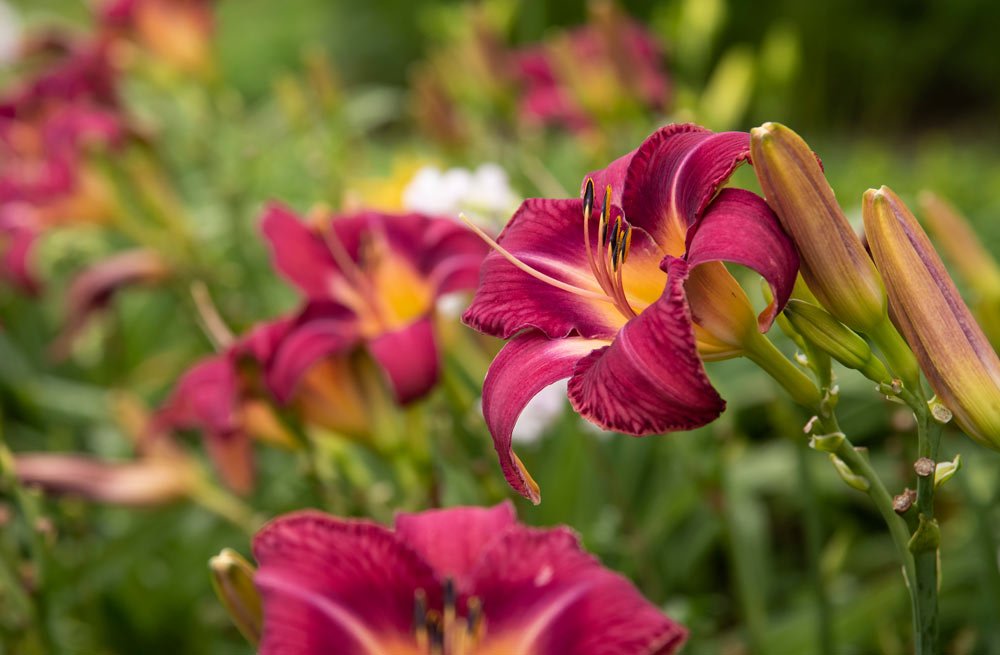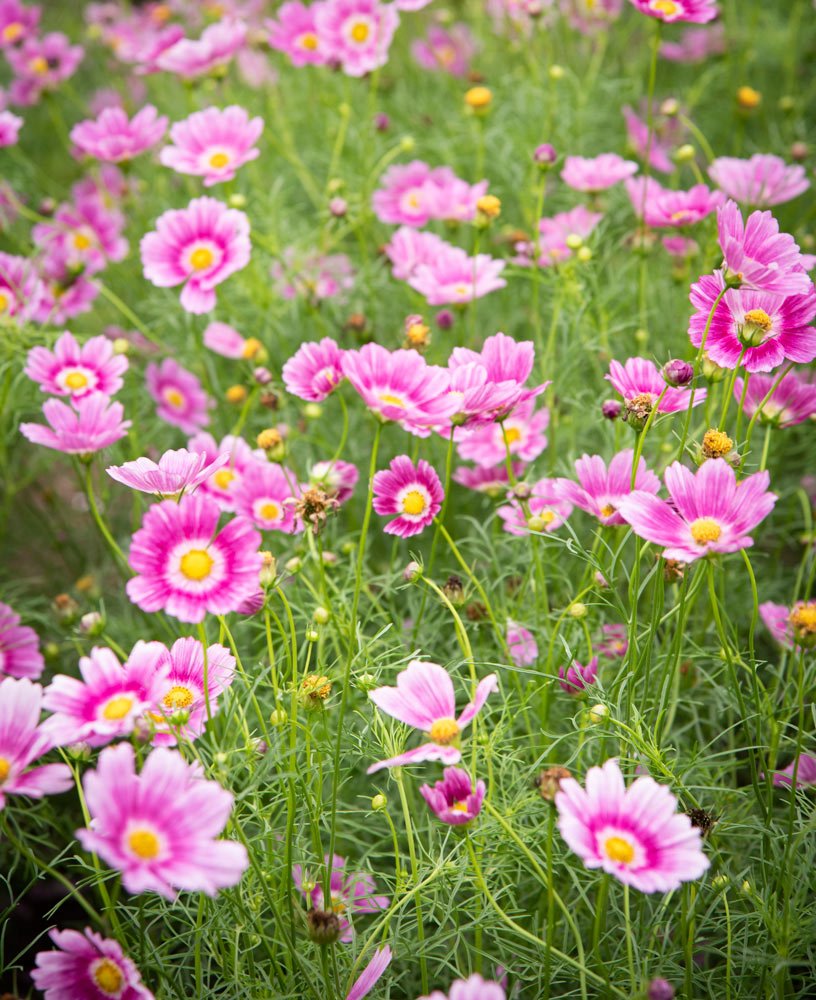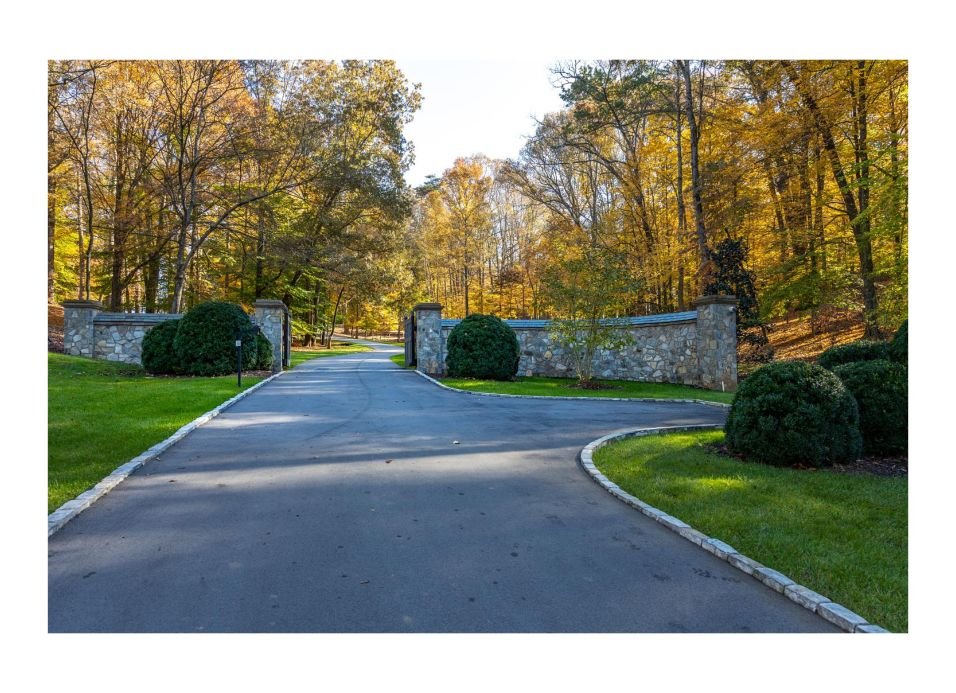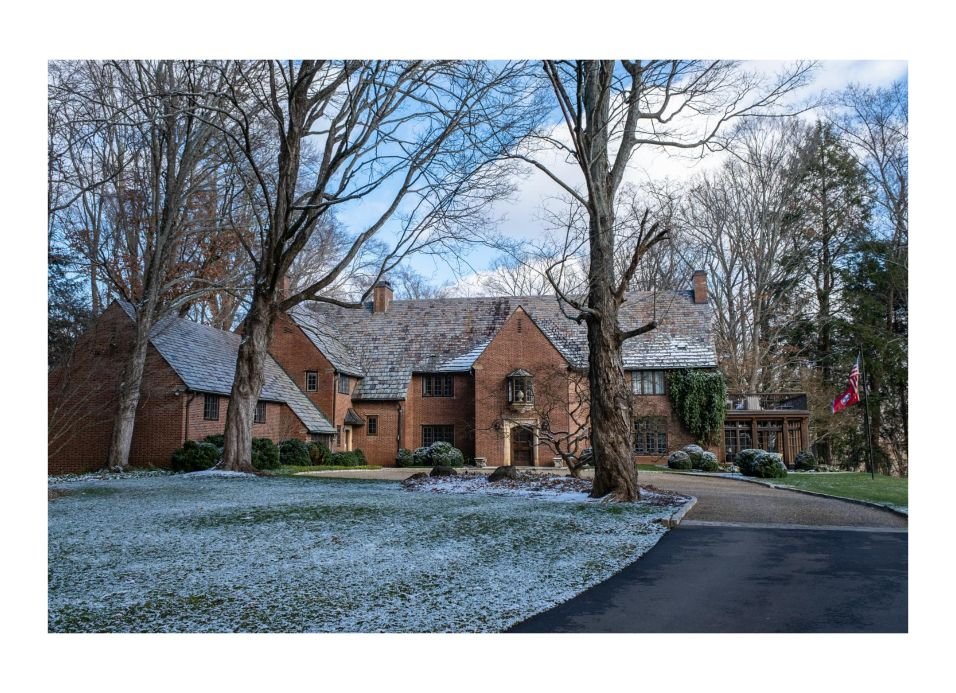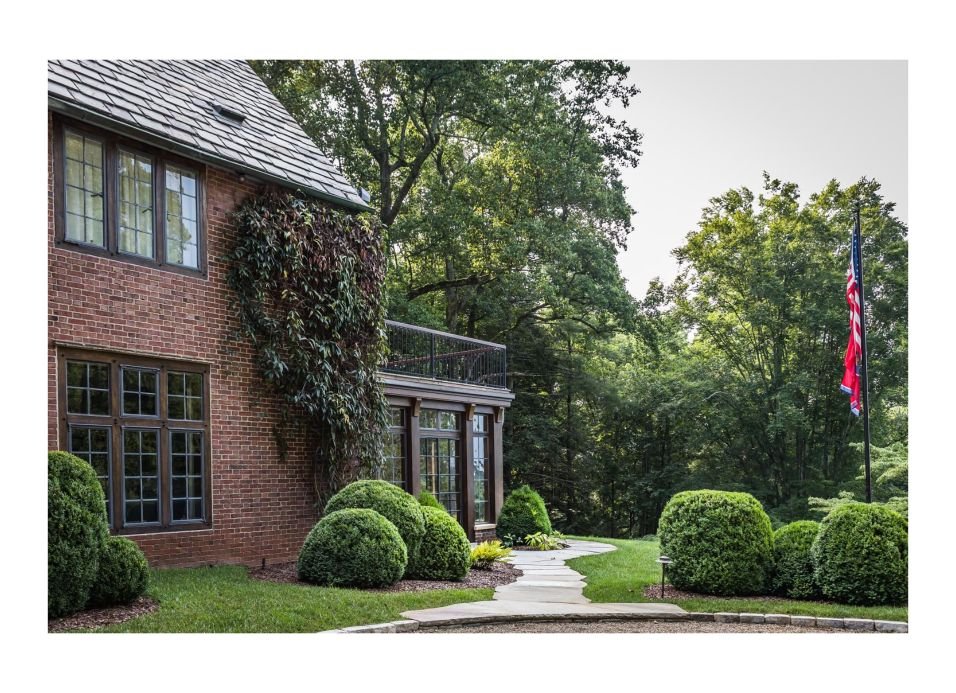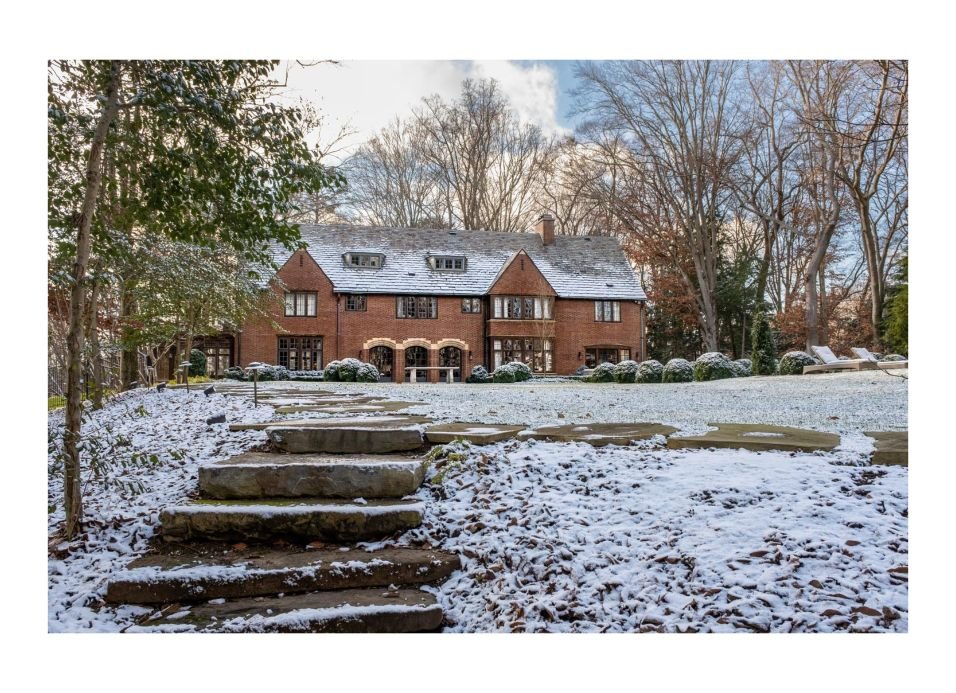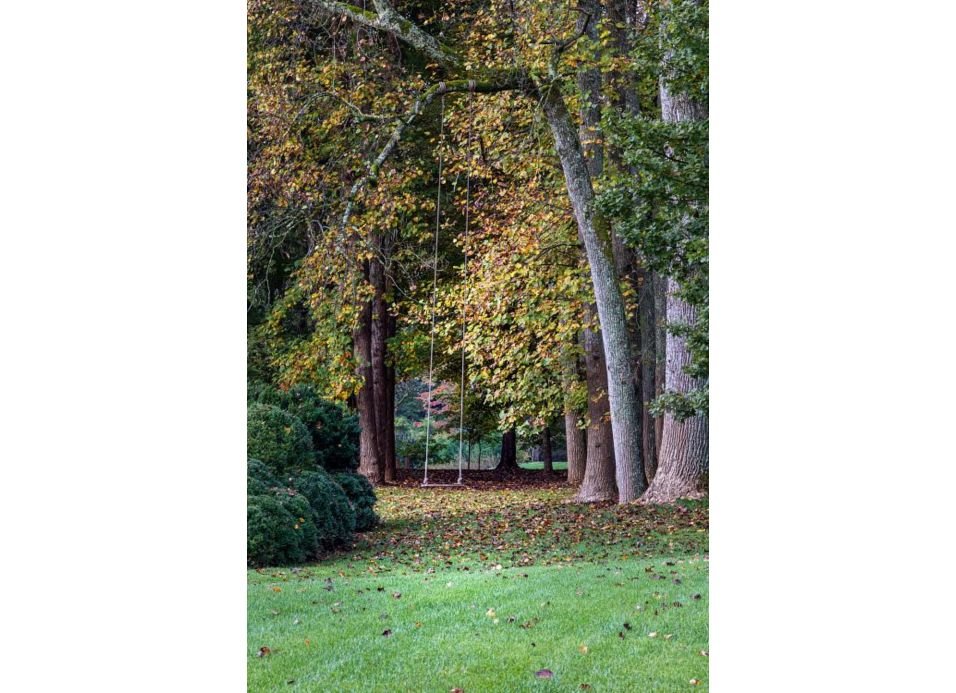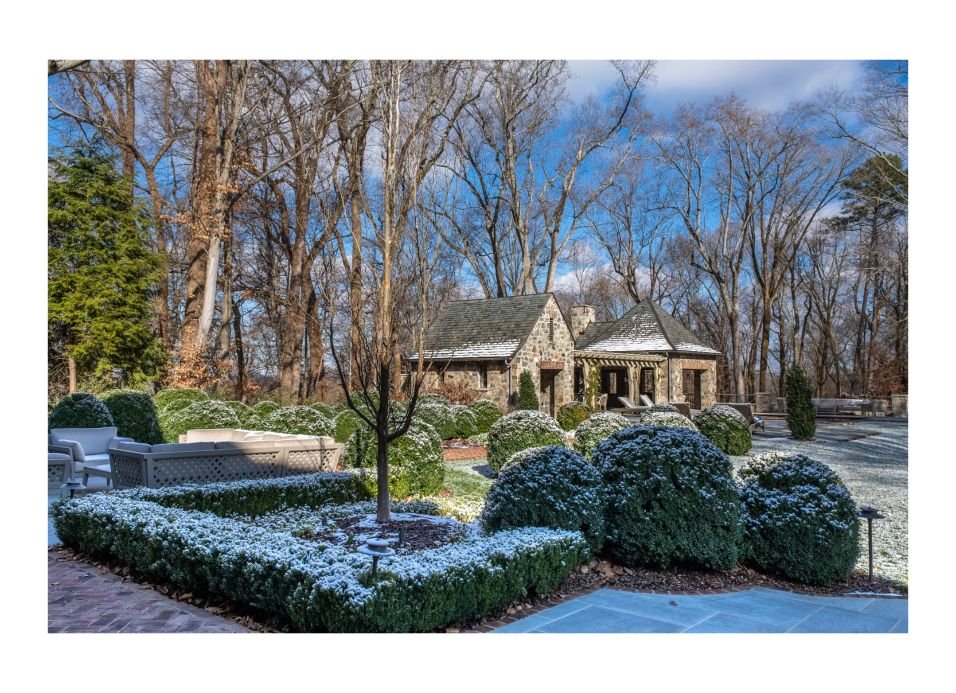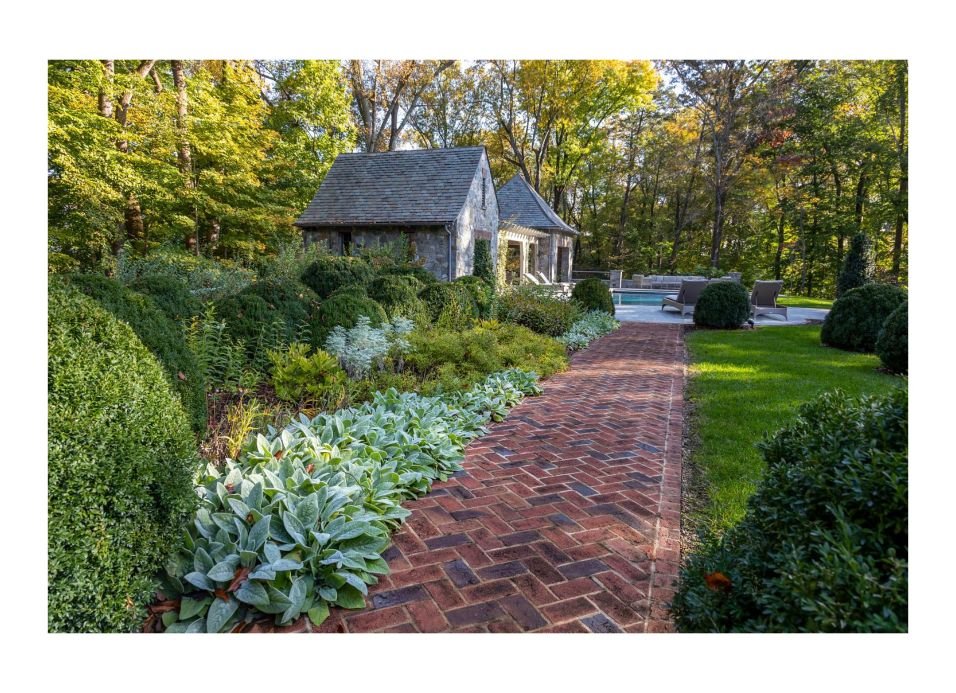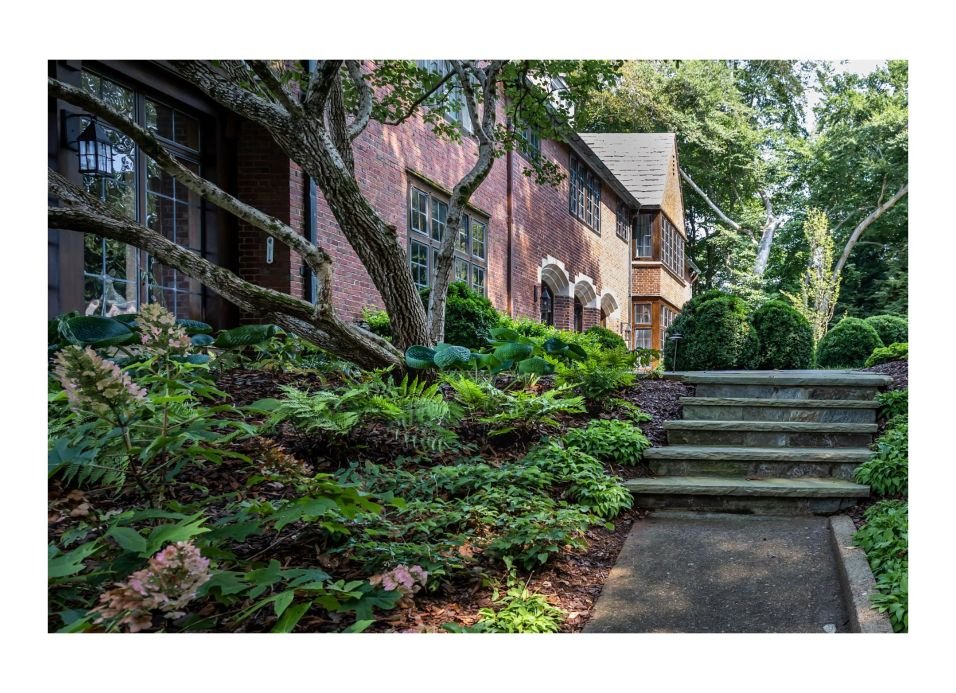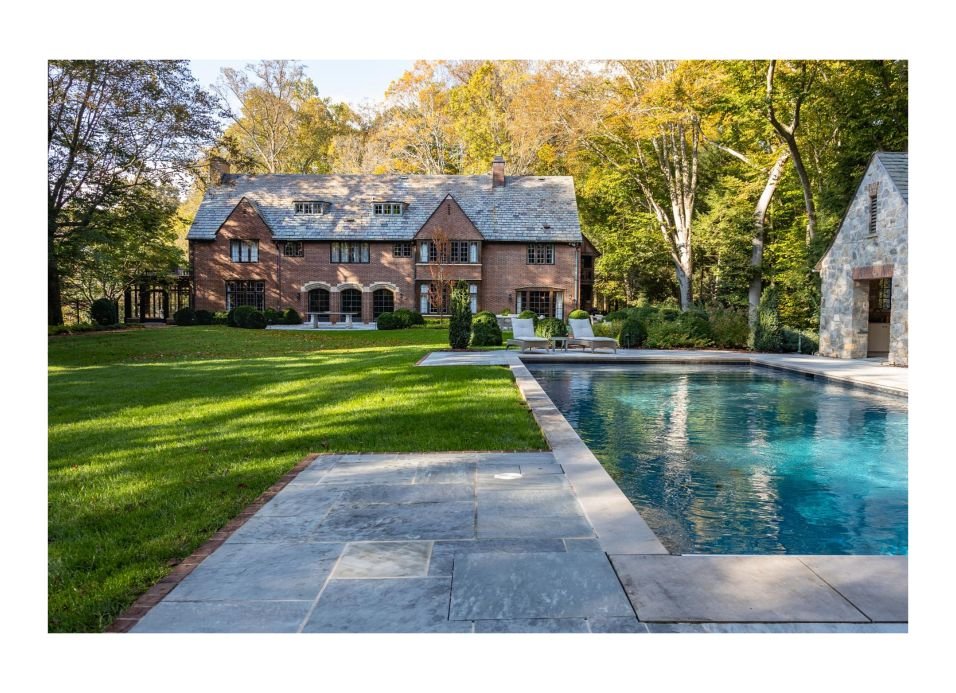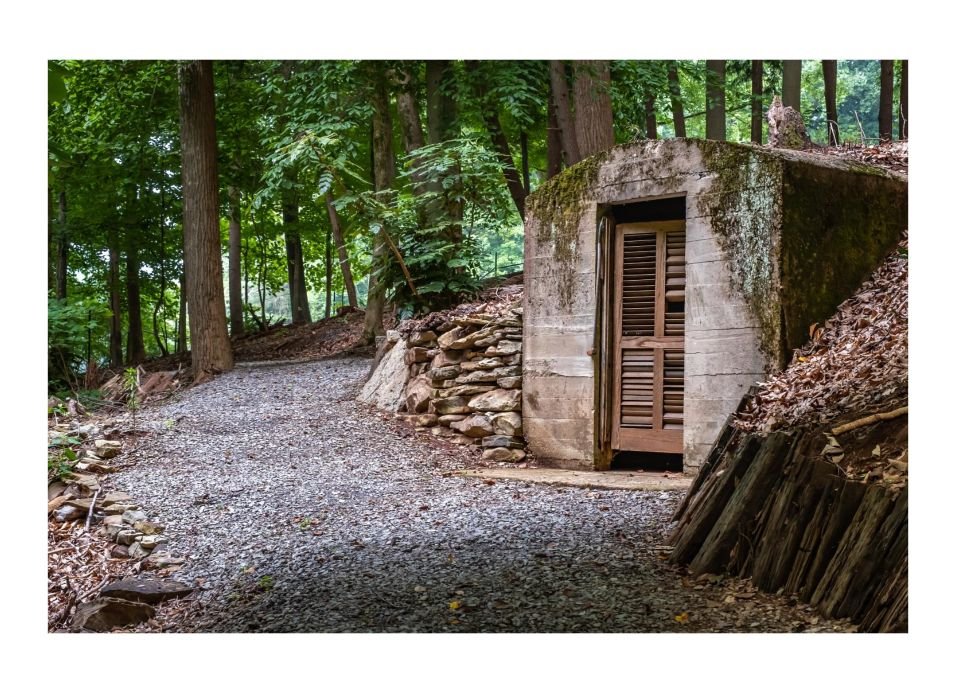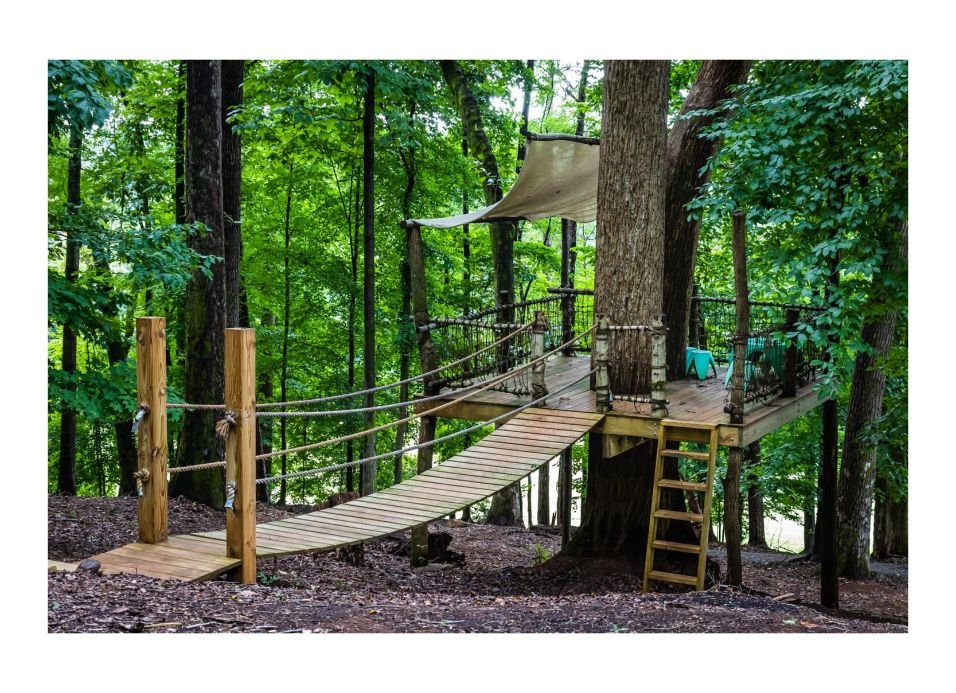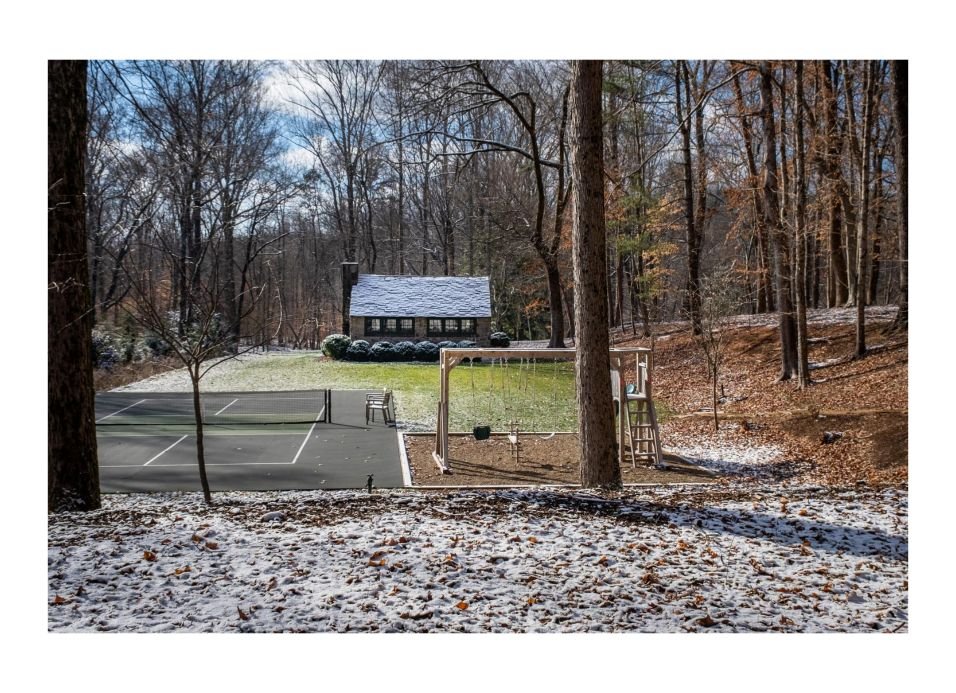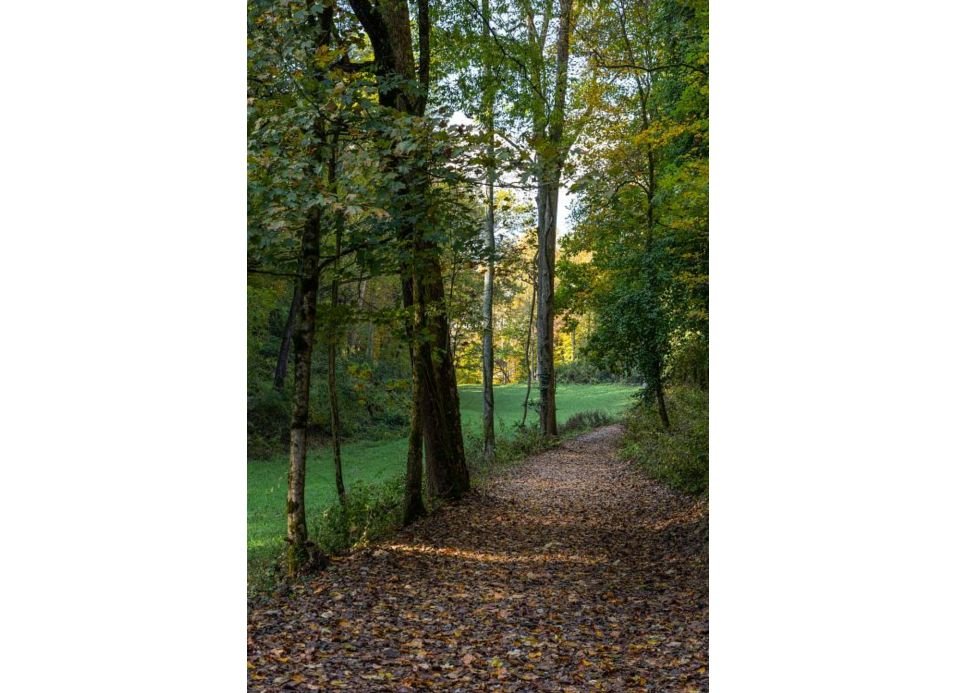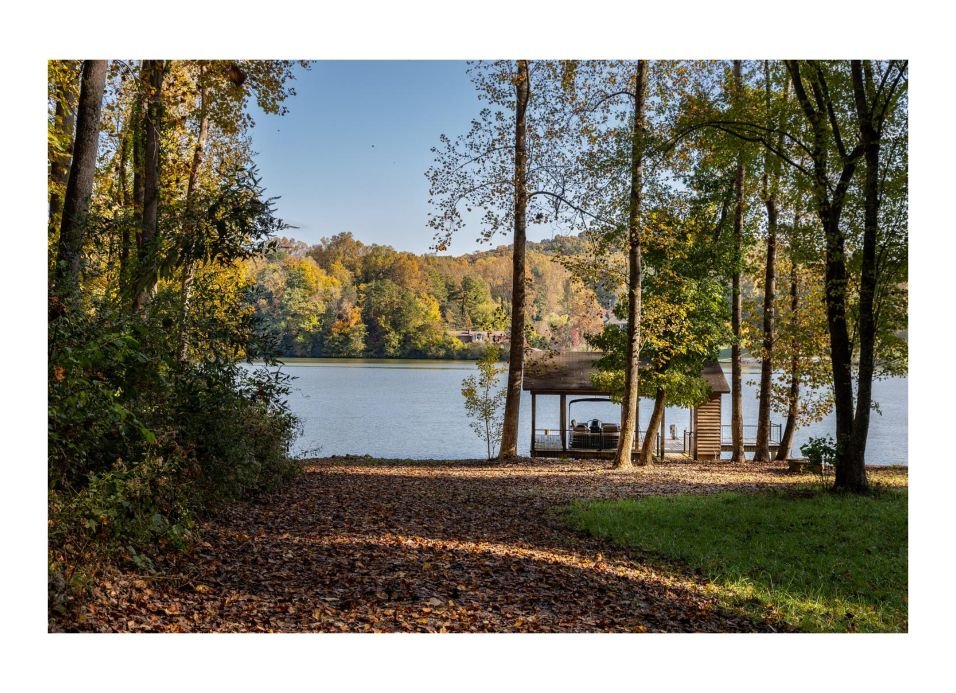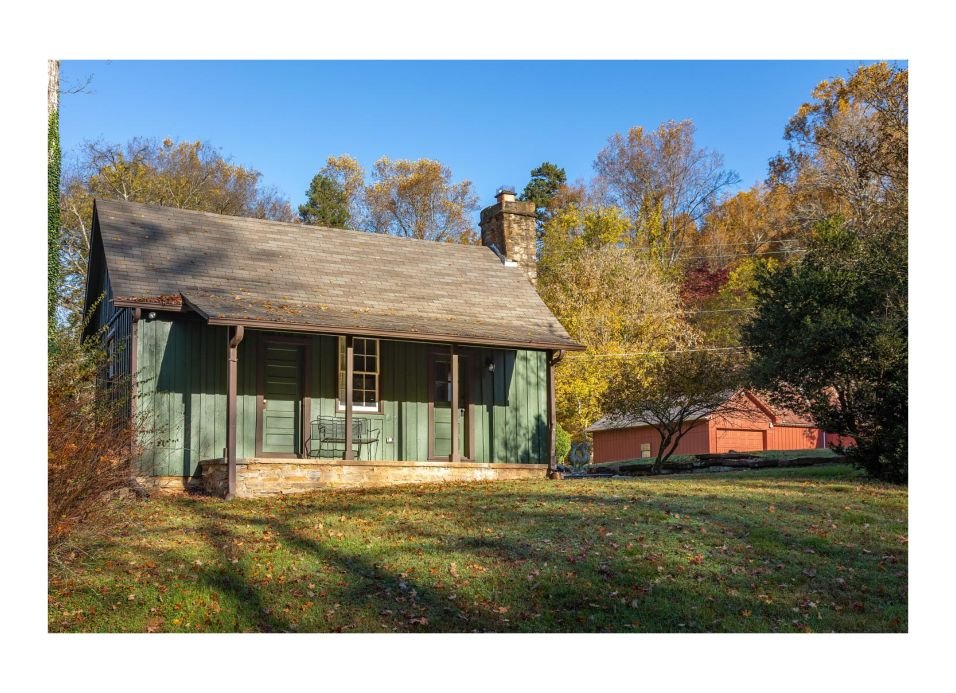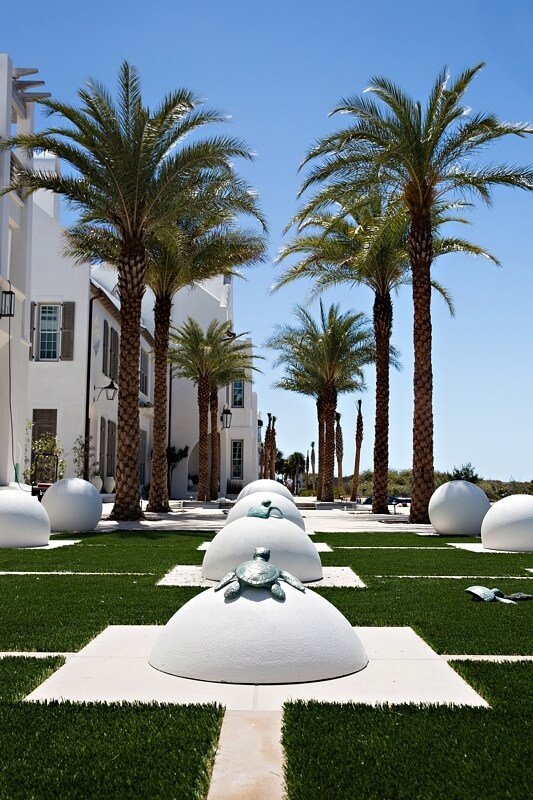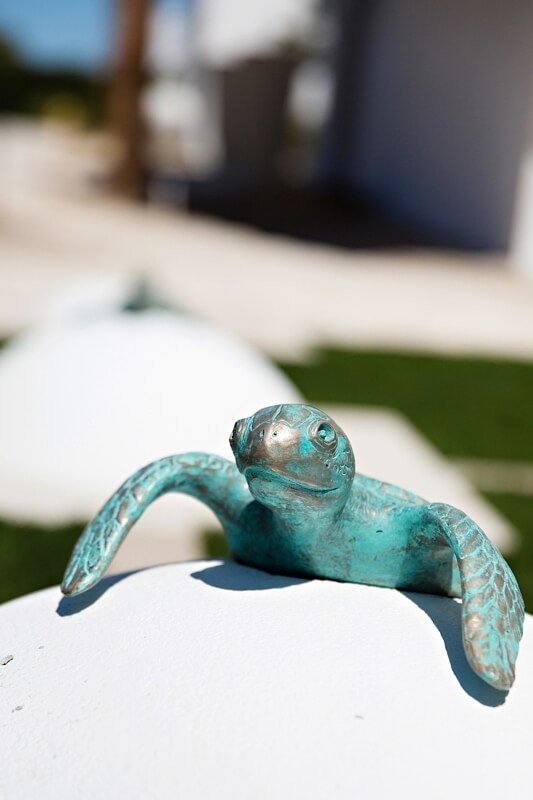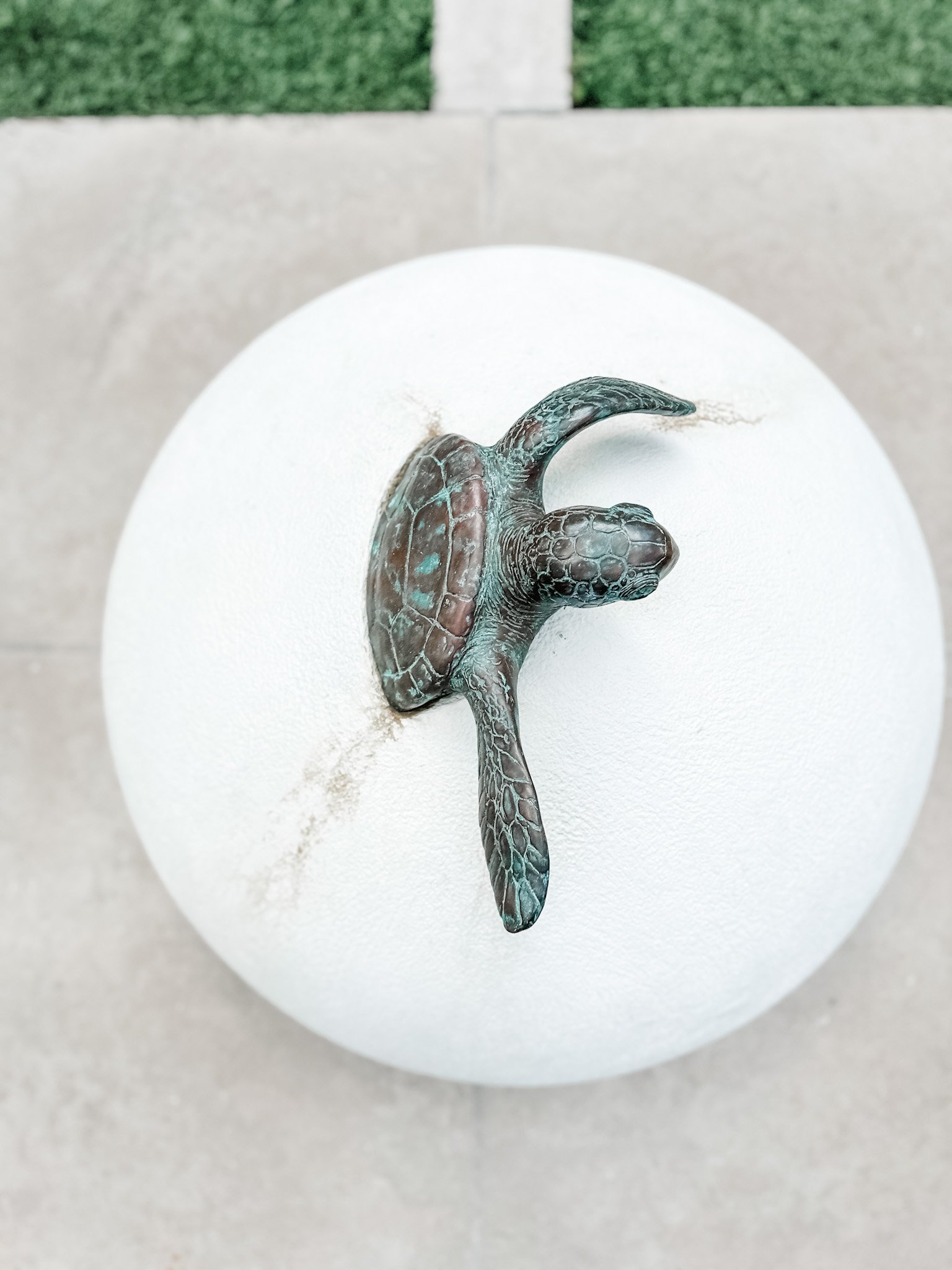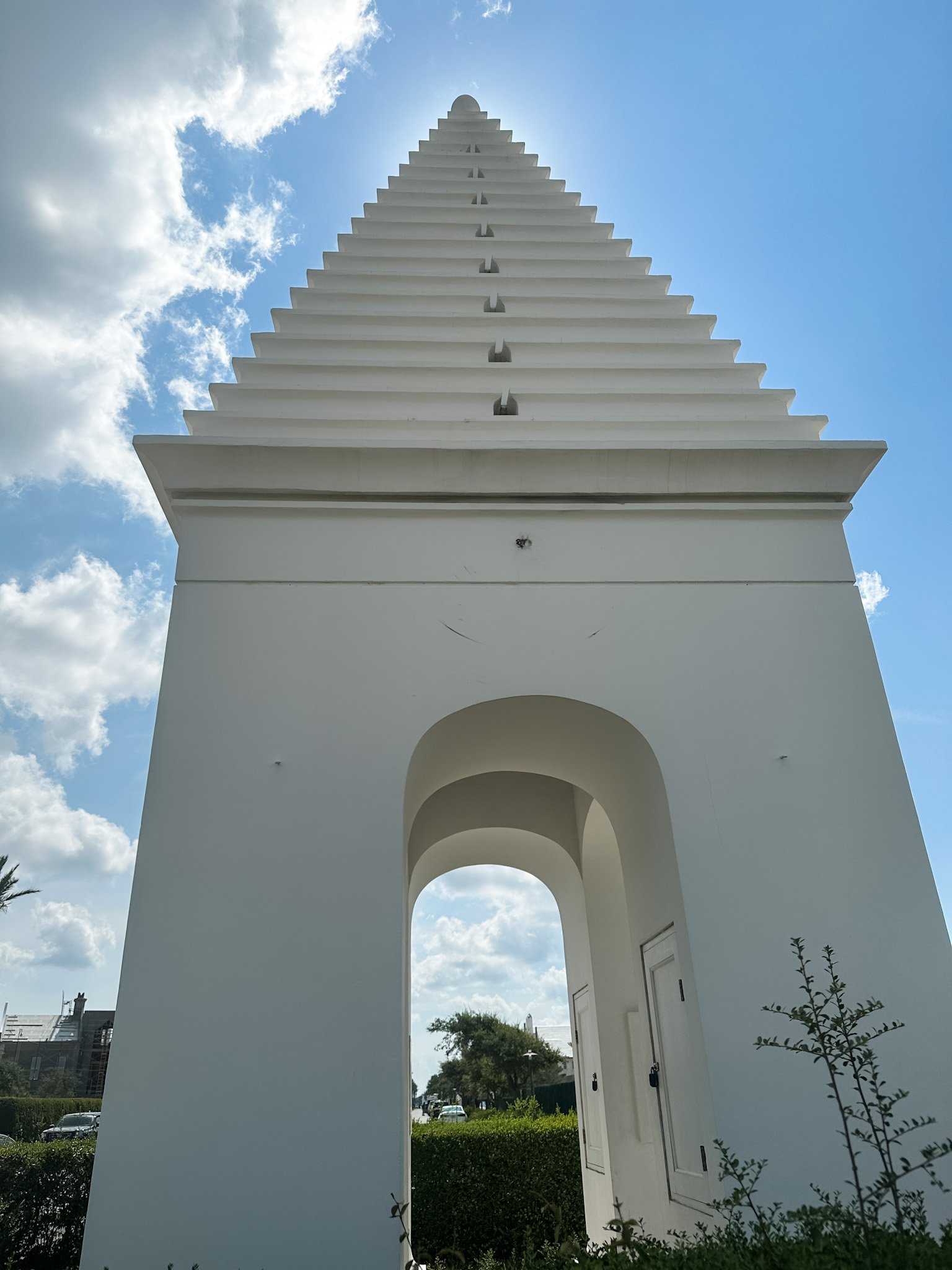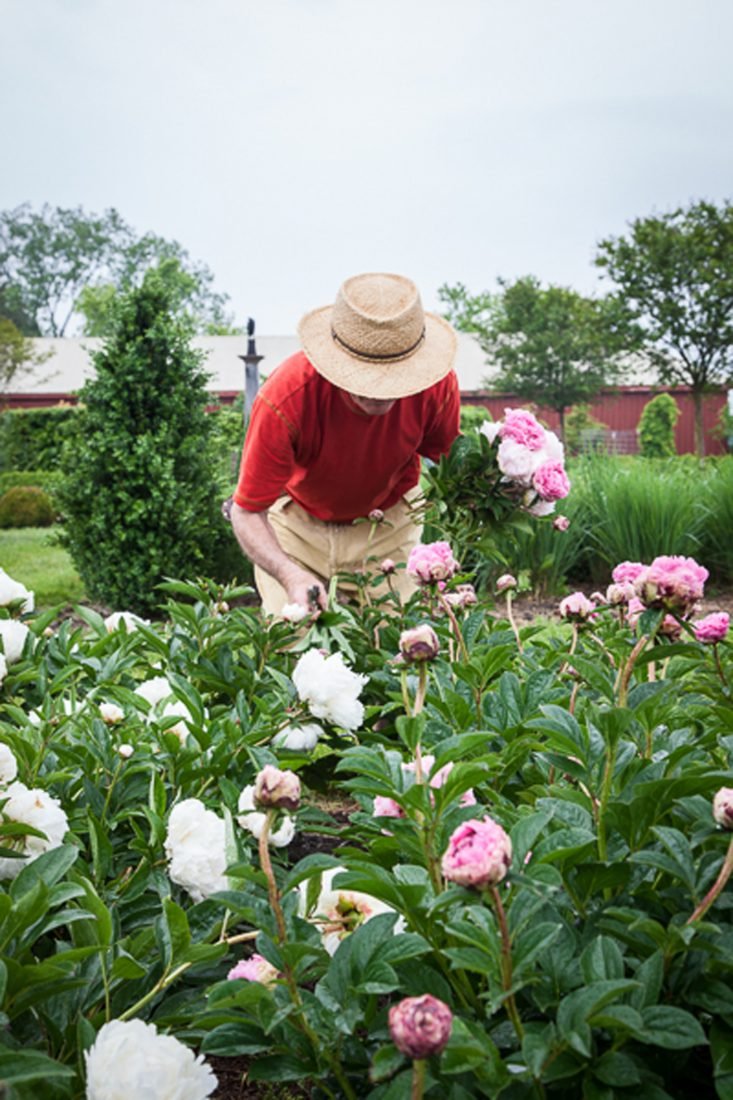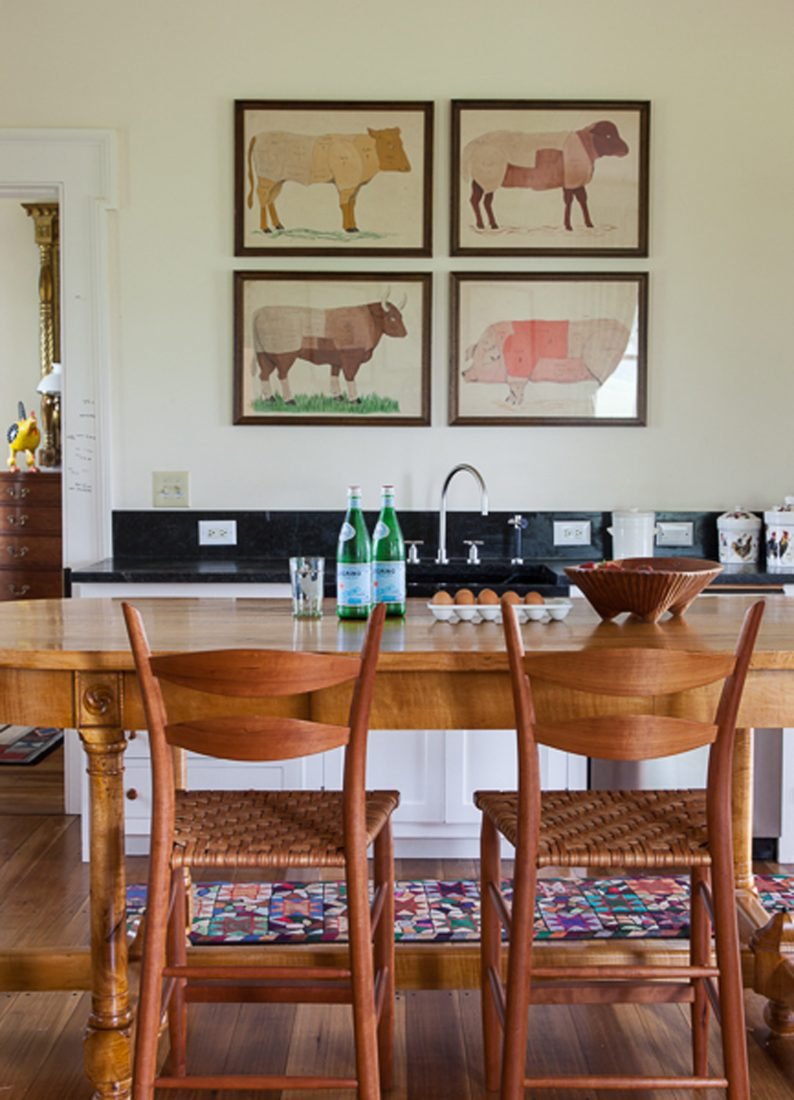A Gardener’s Touch: The Timeless Practice of Sara Smith's Green Thumb
In a world of instant results and modern technology, Sara Smith, founder of The Girls Landscaping, stands as a proud testament to the art of gardening done the old-fashioned way. Each day, she and her team of expert staff step into gardens with the quiet determination of those who know the land intimately.
In a world of instant results and modern technology, Sara Smith, founder of The Girls Landscaping, stands as a proud testament to the art of gardening done the old-fashioned way. She has been cultivating gardens in the Nashville area for over twenty-five years, tending to the plants and soil with patience, care, and a deep respect for the rhythms of nature. Unlike many contemporary gardeners who rely on trendy gadgets, chemicals, and loud power tools, Sara believes in a simple, consistent, hands-on approach. Each day, she and her team of expert staff step into gardens with the quiet determination of those who know the land intimately.
"When meeting with clients for the first time, I always tell them that their garden has to reflect them, but that I treat their garden as if it were my own. I won’t plant something that isn’t going to work for their location and according to their desires," said Sara on a blustery early spring morning at one of the many beautiful gardens she has tended to for years.
In addition to tending beautiful yards, Sara's particular passion and talent lie in creating spectacular container gardens—something she's become well known for. "My seasonal pots by Sara were absolutely gorgeous. All my friends were taking pictures of them and wanted to know who created them. Sara is the best—so professional and very creative in all her designs," said one of her long-time clients, Rhea Hicks.
Sara's professional team is made up of a unique assortment of gardeners and plantspeople whose eclectic personalities and interests are as far-reaching as their wingspans as they trim boxwoods by hand and gently clear out winter debris from flower beds. Their hands, weathered by years of digging, planting, and nurturing, are the true instruments of their craft.
One team member often works with headphones on, listening to classic literature. He was in the middle of Brave New World the day we met. "I've already finished one hundred books this past year," he shared. Some of his favorites so far are A Movable Feast, Robinson Crusoe, and The Sun Also Rises.
Another team member is a former software developer and avid rock climber, traveler, and hiker, who was drawn to gardening out of a concern for climate change. "We need a shift in our approach to flower gardens and landscaping," he shared. "We're seeing more stress on plants and trees than ever before. We all need to be mindful of what's happening to the planet with the reduction in pollinators and overuse of chemicals and emphasize selecting the right plants for the right places."
Unlike the myriad of garden services whose "Mow, Blow, and Go" approach relies on a cacophony of loud power tools, Sara and her team mostly cultivate clients' gardens by hand, clearing leaves gently, pruning boxwoods and shrubs with secateurs, and applying organic mulch and compost by the shovel full, then spreading it by hand.
"I have worked with Sara for over twenty years," says Ben Page of Page Landscape. "We recommend her and her team to Nashville clients who are looking for someone who cares as deeply for their gardens as they do. Her team did the most incredible job with the boxwoods at our own garden last year, and I always find myself in the most thoughtful and enjoyable conversations with her team when they're here."
Whether it’s the sound of a running creek, the first sprout emerging in spring, or the perfectly trained espalier, Sara Smith finds joy in the slow and steady pace of nature’s unfolding. Her method isn’t quick, nor is it always easy, but it’s a practice her hundreds of clients, past and present, believe is worth the effort. The result for them is a garden that’s not only thriving but beautiful, sustainable, and healthy. For Sara, gardening isn’t just about growing plants; it’s about cultivating a deep, lasting relationship with her clients and the earth—one that will endure for generations to come.
To learn more about Sara Smith, contact her at TheGirlsLandscaping@icloud.com or find her at her website HERE.
On Page - Introduction to Page Landscape Blog
All gardens tell a story. . Because gardens speak to the senses. Theirs is a visual, tactile, fragrant language.
Introduction to “On Page Blog”
All gardens tell a story. But their stories can’t be told in words on a page. Because gardens speak to the senses. Theirs is a visual, tactile, fragrant language. Each day, a garden tells something new of nature’s wonders. With every season, its character form and reform in an intricate interplay of colors, textures and shapes. Our role is to weave a fresh plot with each garden we design.
Utilizing classic principles handed down by centuries of gardeners, we create a theme for each garden. To communicate drama. Or, perhaps, whimsy. Clever twists that pique the imagination.
Here on these blogs, we introduce a few of our beloved gardens, craftspeople, clients, friends and their stories. Our hope is to share their stories and ours. In doing so we hope you are inspired to re-visit your garden, and those around you, with new eyes.
Envision, if you can, the enchanting garden that lies just beyond these words…
Celebrating a Southern Garden: Ben Page at Brookside Farm
Celebrating a Southern Garden: Ben Page on his Brookside Farm garden.
Ben Page shares with us the full-blown beauty of his southern garden in its peak blooming period midsummer before the heat became relentless and we transition into the shorter days the accompany fall.
Ben Page shares with us the full-blown beauty of his southern garden in its peak blooming period midsummer before the heat became relentless and we transition into the shorter days the accompany fall.
As summertime nears its end, Ben looks back and talks wistfully of the sunflowers, zinnias, cosmos, and marigolds that bloomed in his own garden outside a three-bedroom Greek Revival cottage in Pulaski, Tennessee that provides weekends of pleasure in the countryside this summer. It is here that Ben and Libby Page spend long, sunlit summer afternoons and delight in tending to and enjoying the cutting and vegetable garden.
“Now that the garden is ten years old, it has reached a maturity of structure that is really fun,” Ben says with pride. “It brings us incredible pleasure to get into the garden rhythm and celebrate the summer season, which brings birds, butterflies, honey bees, and rabbits.”
The bones of this Tennessee garden are laid out in a traditional boxwood parterre pattern common in the Antebellum South and mimic a very old garden that was in Libby’s family from the early nineteenth century.
According to Ben, it is between mid-June and mid-August that southern gardens reach their height of beauty, and he continues, telling us that “this is when the annuals reach their peak size and are saturated with color, and hummingbirds and butterflies call the gardens home.”
The flower and vegetable portion of the garden imitates Thomas Jefferson’s vegetable garden at Monticello. And while the layout of the garden remains constant from year to year, the plants in each area change annually. Tailoring the plant communities to plants that can withstand hot days and introducing a diverse cross-section of fruits and vegetables, Ben was thrilled by the beauty and brilliance of growth that was endemic to this summer.
In hopes of capturing the flavors and memories of the season, Libby pickled okra and squash from the garden and turned tomatoes in a jam that is delicious on hamburgers (says, Ben).
The couple spent many summer evenings strolling and surveying the gardens — sometimes alone and many weekends with company (both human and animal). Despite their dedication to the garden, they only claim about 80% of it as their own. The rest? It is reserved for the fauna that finds as much pleasure in it as Ben and Libby do.
The Peace of Wild Things by Wendell Berry
The Peace of Wild Things by Wendell Berry
A favorite poem by America’s greatest poet laureate and Kentucky farmer, Wendell Berry.
The Peace of Wild Things
Wendell Berry
When despair for the world grows in me
and I wake in the night at the least sound
in fear of what my life and my children’s lives may be,
I go and lie down where the wood drake
rests in his beauty on the water, and the great heron feeds.
I come into the peace of wild things
who do not tax their lives with forethought
of grief. I come into the presence of still water.
And I feel above me the day-blind stars
waiting with their light. For a time
I rest in the grace of the world, and am free.
Preserving the Legacy of a 1924 Jens Jensen Masterpiece: The VanDeveter-Haslam Garden Restoration
Preserving the Legacy of a 1924 Jens Jensen Masterpiece. The VanDeveter-Haslam Garden Restoration
The former Van Deventer garden (1924) in Knoxville, Tennessee is one of the rare masterpieces designed by the landscape artist Jens Jensen (1860-1951), who was a distinctive pioneer in the history of American landscape architecture.
The VanDeventer-Haslam Garden is located in West Knox County, Tennessee along the Tennessee River. Established in 1924, the 66.6-acre property offers examples of the work of landscape architect Jens Jensen. In, 2018 Nashville landscape architect Ben Page was selected by the owners, former Tennessee Governor Bill and Crissy Haslam, to supervise the restoration of the woodland, meadow, formal and informal gardens.
Jen Jensen's design blueprints, personal correspondence, and hand-written plant lists remain in the owner's possession, as do historic photos of the property. The original plans for the estate focused on several sites including the swimming hole, tennis court, woodland garden, rose garden, and the gardens surrounding the house.
“Ben Page's thoughtful restoration celebrates the graceful curves, native plants, woodland pathways, and stone hardscape laid down nearly a century ago. At the same time, he has invigorated the property with his brand of modern aesthetic.”
The woodland hillside "swimming hole" is as alluring as it was generations ago with invisible improvements allowing for easier more efficient maintenance. Adjacent to the swimming hole, a council ring, and fire pit still welcome warm gatherings. This wooded wonderland is bordered by a stone wall and features the original his and her changing rooms. The former tennis court and rose garden have been replaced with a revived players' green, pickleball court, and treehouse.
A home originally built for a furniture maker remains and the nearby stone workshop has been transformed into a playhouse. The traditional gardens surrounding the residence consist mostly of boxwoods and deer-resistant perennials.
Throughout the property, an effort has been undertaken to restore the native wildflowers and trees. Originally called "Konnaseetah," which means "dogwood" in Native Cherokee the property is laden with East Tennessee's favorite flowering tree. Descendants of original trillium and fern proliferate in the woods.
In addition to the restoration and re-imaginings of the Jensen features, the Haslams have made other additions to the property. A new entrance allows for safer access while still ascending through the woods to the circular driveway and home. From the home's back yard, when the surrounding hardwoods lose their leaves, there is a wide view of the river.
On the sweeping green behind the residence, a modern pool provides a more formal centerpiece for entertaining and when the hardwoods drop their leaves, a wide view of the river remains. New seating areas are in keeping with the home's architecture and are substantial modern additions, fully expected to survive the next century or two with grace.
The English Revival Tudor house was designed by local architect Charles Barber in 1924.
Persons associated with the design of the garden include Jens Jensen (landscape architect, 1924), Mr. Beardsley (gardener, 1924-), Ben Page (landsacpe architect, 2018), Brian Campbell (gardener, 2019-).
Behind This Atmospheric Nashville Abode Teeming With Natural Wonder (LUXE magazine May 2023)
“Behind This Atmospheric Nashville Abode Teeming With Natural Wonder. “ LUXE Magazine feature, May 2023
For homeowners Greg and Cristina Brophy, a tree-covered lot overlooking Nashville’s 3,000-acre Percy Warner Park was reason enough to purchase a lush property in Forest Hills, Tennessee.
For homeowners Greg and Cristina Brophy, a tree-covered lot overlooking Nashville’s 3,000-acre Percy Warner Park was reason enough to purchase a lush property in Forest Hills, Tennessee. But equally intriguing were the man-made features found on the 6-acre site, including 64-year-old local limestone retaining walls essentially wedged into the hillside.
“The stone drove so much of our home’s design,” Greg reveals. “We wanted a house that looked great with, and celebrated, those existing walls.” These components became crucial as he and Cristina set out to create a visionary residence imbued with influences of northern California, which the couple previously called home.
The Brophys requested an organically inspired house that would afford privacy while existing symbiotically with its landscape. And because an elegant swimming pool also topped their wish list, their architectural plans with residential designer Jonathan Torode evolved to become a U-shape to wrap around it, affording watery vistas from every room.
“It was important to bring views of the park into the home,” adds Torode, who responded directly to the topography, then created a floor plan that allowed for strategic sight lines from key rooms.
Building materials were kept intentionally neutral: stucco, concrete, wood, metal and the beloved limestone—plus a proliferation of metal windows and doors to lure the eye outside.
The lot proved challenging because of its steep slope. Problem-solving included reinforcing the foundation with micro piles of steel and concrete. For this complex but delicate task, Torode is quick to defer credit to general contractor Jim Mullowney, who—along with a team of engineers—demonstrated immense structural expertise. With the residence securely situated, Mullowney’s commitment to go the extra mile paid off.
“Now, it looks as though our home was built right into the hill,” Cristina describes.
Indoors, several elements echo the old-world gestures seen outside. Character-grade oak floors and hand-hewn ceiling beams keep the look natural and understated as hand-troweled plaster walls come alive in the ambient sunlight. “We really wanted simplicity and restraint,” Cristina says, adding, “We decided against crown molding; only minimal baseboards.”
The abode is divided into distinct areas linked by broad, light-filled passages. One leading to the primary suite even includes a vestibule as a transition space, integrating antique French linenfold doors Cristina found in Atlanta—complete with original iron hardware. “We wanted components like these to be the artwork as much as anything else in the home,” Torode notes. “Those doors add to the richness one experiences in the house every day.” Another passage leads to Greg’s office, itself a showcase of structural precision and complex materiality. Here, millwork crafted by Mullowney with fellow carpenter Kevin Yatsinko frames a 10-foot-tall steel-plate fireplace as a focal point.
When furnishing the home, Cristina was influenced by the architectural features inside and out. “I kept going back to the stone walls; that was my foundation for the interiors, because they have such a warm, organic feel to them,” she shares. An 18th-century walnut table in the dining area and a circa-1600s bench in one hallway exemplify her special selections, though she contrasted these with modern furnishings and metal fixtures to fit the scale and tone of the house.
A sprawling backyard with elaborate hardscaping rounds out the experience.
Paying respect to the scope and scale of the property, landscape architect Ben Page’s team installed materials that fit the aesthetic goals and existing stone walls. “The stones used for the terraces and walkways are all indigenous to Tennessee and include a rare color of crab orchard stone endemic to the area, nicknamed ‘squirrel’ due to its subtle grays and tans,” Page reveals.
The landscape architect’s most commanding vista is framed by a pair of artisan-forged, diamond-patterned steel doors. Similarly, his insertion of Slender Silhouette sweetgum trees—a favorite of Cristina’s—bring complementary structure to swaths of native plantings, including Rudbeckia daisies and other wildflowers that thrive locally.
“Ben’s selections are beautiful now and will be even more so in the years to come,” Cristina muses.
For now, she and Greg appreciate how the house and yard both change with the seasons. Old-growth sweetbay magnolias flower in the spring before native grasses brandish pink plumes come fall, with winter days casting long shadows into the interior. It’s all part of the seamless link to nature the Brophys desired, and which they can enjoy whether seated around the fire pit or within the window-bordered breakfast nook.
“We feel like we’re outdoors even when we’re indoors,” Cristina says. “That’s how we want to live.”
HOUSE DETAILS
Photography:
Ali Harper
Architecture:
Jonathan Torode, Pfeffer Torode
Home Builder:
Jim Mullowney, Mullowney General Contractor, Inc.
Landscape Architecture:
Ben Page, Page Landscape
Writer
Lisa Mowry
Designer Profiles: Interview with Ben Page (NFocus Magazine May 2023)
Designer Profiles: Ben Page Interview with Ben Page featured in NFocus magazine September, 2022
The landscape architect shares some of the perks of his job, where he shops locally and the best advice he ever received.
Ben Page in his home garden.
The landscape architect shares some of the perks of his job, where he shops locally and the best advice he ever received. (Featured in NFocus magazine September, 2022)
From his earliest days playing on the farms owned by his grandparents and great-grandparents, Ben Page has been one with the land. So, his family must have been surprised when he first pursued medicine as a career. Fortunately, he changed paths and went on to receive a Bachelor of Landscape Architecture from the University of Georgia. For more than 40 years, Ben has been creating award-winning designs — primarily residential landscapes — that are thoughtful, intentional and timeless. A history buff, he often combines historical references with modern sensibilities. His projects have spanned the country, and his work has appeared in VERANDA, House Beautiful, Traditional Home, Architectural Digest, Flower and more.
This year, Ben launched his new eponymous firm, Page Landscape, and he continues to specialize in landscape architecture, land planning and urban design for residential, community and institutional clients. He says the only other career that would have given him as much pleasure would be to be an organic farmer. In fact, on many weekends, he and his wife, Libby, can be found at their historic farm in Giles County, where he has vegetable and cutting gardens, as well as a boxwood parterre. Ben shared some of the perks of his job, where he shops locally and the best advice he ever received.
On his CAREER PATH…
I thought I was going to be a doctor until I encountered Statistics 101 at the University of Tennessee. I had no idea what I was doing and realized that if I had to have statistics to be a doctor, I was going to have to abandon that career. Luckily, I found the field of landscape architecture, which combined my love of the outdoors and an almost unlimited opportunity to learn so many aspects of design.
On his HUMBLE BEGINNINGS…
I started work right out of school for Robert Marvin & Associates in Walterboro, South Carolina. I was lucky to start my career with some of the best designers in the field at the time and jumped into some amazing projects up and down the coast, particularly, a lot of projects on Hilton Head Island and Charleston, South Carolina, and Savannah, Georgia.
What are some of the best JOB PERKS of your job?
I love all aspects of landscape history. Working with clients who are stewards of historic properties is particularly satisfying to me. Working on the renovation and restoration of the grounds of the Governor’s Mansion here in Tennessee was enormously meaningful, primarily because [Crissy and Bill] Haslam were so deeply involved in every aspect of the project, and they are both amazing people on every level.
What are some of your JOB CHALLENGES?
The most challenging part of my career at the moment is to try to align the expectations of our clients with the construction costs today. It is amazing how fast construction costs have escalated in our field recently.
What is the BIGGEST INFLUENCE on your work?
Travel and access to our comprehensive design library here in our office is a constant source of inspiration. Libby and I love to travel to new destinations, and the clients and people that I have been fortunate enough to meet through the years are constantly an inspiration. I love learning about diverse cultural and art institutions.
Where do you like to SHOP LOCAL?
My favorite local resources are the amazing nurseries here — Moore & Moore Garden Center, Bates Nursery & Garden Center, GroWild, and Samara Farms, all of which continue to inspire me with their diversity and super-helpful and knowledgeable staff. I have learned so much, horticulturally, from all the people at these businesses. The other inspiration is the artisans who actually bring our designs to life: bricklayers, stone masons, iron artisans, lighting designers, engineers [and] contractors. They are all vital to the realization of the dreams our clients ask us to bring together.
What is the BEST ADVICE you ever received?
GET INSPIREDThe best advice I ever got from a mentor about design issues with clients was 40 years ago, when our dear friend Albert Hadley told me, after several drinks at Mortimer’s in New York City, “Give them something that they never knew they wanted.” It took me a while to figure out what he meant, but I think when you are passionate about learning and you continue to dream, good things will usually come to fruition. The other piece of sage advice was from my amazing grandmother, consummate gardener and a 19th-century matriarch, who said, “Always put a 50-cent plant in a $5 hole.” Enough said!
What INSPIRES you?
My daily source of inspiration is the vast complexity of mother nature. We need to listen more carefully and become better stewards of all aspects of her realm.
Will you share a PROUD MOMENT with our readers?
It would be impossible to describe a favorite project; there have been so many through the years. My hugely meaningful experience unique to this career is to return to a project and see a child playing under the shade of a tree which we planted as part of a project 30 years ago. Heaven!
What do you have IN THE WORKS?
Right now, I am working on the master plan for a 4,000-acre farm, which is focused on equine therapy for young people; a gorgeous new Tennessee farmhouse with an amazing vegetable garden and greenhouse; and several residential projects with super-interesting clients here in Nashville and in Charlotte, Louisville and Memphis.
Share some of your FUTURE PLANS with our readers.
My hope for the future is that I can continue to learn and be inspired by new experiences every day, meet new and interesting people, continue to travel in this wonderful country and abroad, and be integral to the lives of our two amazing grandchildren.
Turtle Bale at Alys Beach:Where Creative Minds Converge (StyleBlueprint July 2019)
Turtle Bale Green, which stretches north from the ocean on the western side of the town, follows the storyline of the surrounding ecological area and Alys Beach’s turtles.
“There is an imperative to be super sensitive to the existing environment of animals, and the sea turtles are a big deal here,” Ben Page explains.
A tiny town in Florida’s panhandle region, which made its first appearance as a destination known for fresh design approached with an unmatched level of deliberateness and care in 2003, Alys Beach is home to arresting architecture that is rivaled only by its natural surroundings.
…
More than a decade since Alys Beach debuted, it has continued to grow in line with the vision of the family and the original masterminds. Most recently, Ben Page of Page|Duke Landscape Architects lent a hand in the overarching design of the community with their landscaping touches that complement the original landscape designs of Kendall Horne and illustrate the still-growing nature of the town.
Architecture and landscape working together
The charm of Alys Beach lies in the open views and sightlines to the ocean, and architects and landscape architects were careful not to interrupt those views. “We saw landscape a huge component of introducing organic features throughout the town, and as the town has matured, the landscape has played an important role,” Marieanne says of the relationship between architecture and the landscape.
“Ben Page approached the project with a goal of “embroidering the tapestry that has been created with thoughtfully human-scaled civic spaces,”
The pair has spent more than eight years working on this project, an opportunity they are grateful for. “It is an honor to be a part of this,” Jason says earnestly. “We are working with some of the most incredible architects in the world. In a lot of ways, these architects are charged with celebrating the landscape and we want to also design outdoor spaces that celebrate their architecture.”
Jason and Ben approached the civic spaces with the objective of creating unity amongst the neighbors, which is essential in a town with homes designed around central courtyards, as opposed to the front porches more common in beach towns.
Turtle Bale Green, which stretches north from the ocean on the western side of the town, follows the storyline of the surrounding ecological area and Alys Beach’s turtles.
“There is an imperative to be super sensitive to the existing environment of animals, and the sea turtles are a big deal here,” Ben explains.
Using the turtles as inspiration, Jason and Ben conceived a family-friendly space with natural elements guided by what is native to the area in celebration of the turtle that is accessed via a pedestrian walkway.
A casual application of formal materials was used to counterbalance the formality of the architecture. Sand live oak, rosemary and coastal dune grasses are found in areas close to the ocean, cabbage palm and saw palmetto are used along the walkways, and date palm trees shade the pedestrian path.
“The exquisite color of the water and the existing structural aspects of the landscape are incredibly elegant,” Ben says explaining the natural landscape their designs are meant to complement. “The ecological zones, which are very much protected by the community, established what plant communities we used.” For example, you will only find sand oak near the beach, the harsh environment in which it thrives.
Kentucky-based artist Dan Dutton of Rivera-Dutton Sculpture Studio
In the park itself, a mound of turfgrass was designed to resemble a turtle’s shell and invite play. In addition to greenery and native plant life, water and sculptural elements were included in the landscape design of Turtle Bale Green, further celebrating the majestic sea turtles.
Kentucky-based artist Dan Dutton of Rivera-Dutton Sculpture Studio was tasked with creating the turtle sculptures, something he was eager to do.
“The work began with drawings, watercolors and small models, made in clay, that we glazed and fired in our ceramic kiln. As the project evolved through many discussions and experiments, the scale, context and story of the sea turtles began to develop, finally settling into the form of two large adult turtles, and three newborn ones, just emerging from their eggs,” Dan shares of the process. “It was at the point of emergence in the story when the eggs took on a dramatic significance and introduced an element of fantasy and whimsy, held in place by a formal design for a gridded pavilion and a fountain.”
It is Dan’s hope that the turtles will “bring joy to all who see them, and a renewed sense of how precious and beautiful these wonderful creatures are.” For Ben, he hopes that the sculptures are fun and educational for the entire family. “Someone might become a marine biologist,” he says, smiling. The turtles will be joined by bunnies and large palm tree sculptures by Jim Budish, which will live in another open area later this season.
“Because the Family Design Committee has remained such a stalwart steward of the initial design intent of the Alys Beach community, it has been a joy for our office to work with them toward the realization of a portion of that original dream. We believe the Turtle Bale Springs and Turtle Bale Green projects are poised to become another jewel in the necklace of rich outdoor experiences available to the residents of Alys Beach,” Ben explains.
HOMEPLACE - A Country Retreat (Garden & Gun Magazine August 2013
A Country Retreat: A Tennessee couple finds a home amid their past. Published in Garden & Gun Magazine, By JULIA REED
Ben and Libby Page’s introduction to Giles County, Tennessee, came in the spring of 2004, when Libby’s mother decided it was time to educate the family about its roots and created a “Family History Day.” The Nashville-based clan piled onto a bus and headed south toward Pulaski, where they toured nearby farms and family homesteads, accompanied by a historian.
A Tennessee couple finds a home amid their past By JULIA REED
Ben and Libby Page’s introduction to Giles County, Tennessee, came in the spring of 2004, when Libby’s mother decided it was time to educate the family about its roots and created a “Family History Day.” The Nashville-based clan piled onto a bus and headed south toward Pulaski, where they toured nearby farms and family homesteads, accompanied by a historian. By the end of the day, Libby, an event planner, and Ben, one of the South’s leading landscape architects, had become so smitten with the terrain—leafy rolling hills dotted with picturesque barns and nineteenth-century farmhouses—that they asked the fellow leading the tour to let them know if any property ever became available. Two weeks later, the call came. Two years later, the couple, along with their daughter, Florence, spent their first night at Brookside.
They named the house, a three-bedroom Greek Revival built around 1845, after an Italianate Revival manse a mile away, rebuilt after the Civil War by Libby’s great-grandmother. Libby describes the “new” Brookside as having been generally “buggered up” by various twentieth-century owners, the most glamorous of them a New York couple who held polo tournaments on the property during the fifties and sixties. During the Pages’ two-year renovation, the house was taken down to its studs, with the exception of the living room, the only space that retained the original plaster walls. Builders restored a back staircase, as well as a now-enclosed breezeway that joins the house to the spacious kitchen. A side porch that had been walled in was returned to its original state (albeit with a screen), and a utility area was added with an enormous soapstone sink, the first repository for vegetable and flower cuttings from the gorgeous garden. Below, the cellar was restored and converted to a game room with a custom banquette and an 1880s maple pool table the Pages found in Wiscasset, Maine.
Whenever possible, the couple enlisted Tennessee talent. James Dunn, a Nashville carpenter, did the millwork, from door and window frames to mantels and the cherry handrails on the stairs. Furniture maker Jim Horne made porch side tables (painted with lovely, chalky milk paint); a magnificent round dining table (with Tennessee cherry inlaid around the rim depicting things grown on the farm in the nineteenth century, including cotton, corn, hollyhocks, and roses); and a kitchen island/table decorated with carved symbols denoting the Pages’ combined French, English, Scottish, and Irish heritage. Nashville-based photographer Jack Spencer took the stunning open and closed magnolia images that flank the living room fireplace, near a Victorian sofa from the original Brookside. Ben’s family’s roots in Glasgow, Kentucky, get a shout-out too—the whimsical carved chickens in the kitchen came from Kentucky folk artists Lonnie and Twyla Money (he’s the carver, she’s the painter), and the graphic red-and-white quilt in a guest bedroom was made by Ben’s grandmother, who won second place for it at the Kentucky State Fair.
The couple spends almost every weekend at the farm, less than two hours away from Nashville, and Ben spends all day Saturday on one of his two mowers or working in the gardens he designed. The cutting garden contains a dramatic “Seven Sisters” rose dug up at the original Brookside, along with peonies from Ben’s grandmother’s garden. The prolific vegetable garden includes at least ten heirloom tomato varieties and three kinds of sweet corn, in addition to carrots, beets, Kentucky Wonder beans, pattypan squash, and all manner of other goodies that end up in jars put up by Libby, a prodigious cook, or on the table at Saturday suppers with houseguests. The suppers often include more Giles County bounty: grass-fed beef from Angus cattle raised by neighbors Mike and Susan Mayfield.
First, though, comes one of the Pages’ favorite rituals, the “sunset cruise.” Gin and tonics are mixed, whiskey or wine is poured, and everyone hops onto the John Deere Gator for a trip to the high meadow at the back of the property just as the sun starts sliding down. It is moments such as these—rides up the meadow, early morning breakfasts on the porch, putting the season’s first peas and okra and beans in the ground—that Ben says constantly “refill” his spirit. “It’s the turkey walking over the hill every Saturday morning because he knows he’s home,” he says. “It’s plunging your hands in the dirt. That’s a huge deal for me. You can’t be anything but humble in a garden.”














